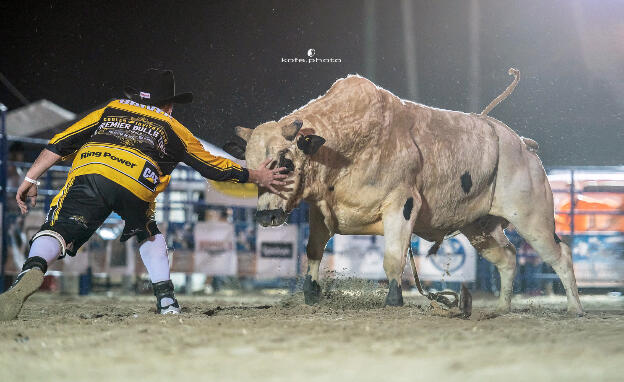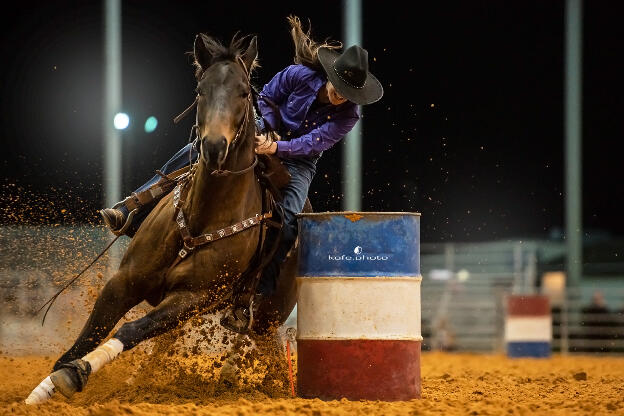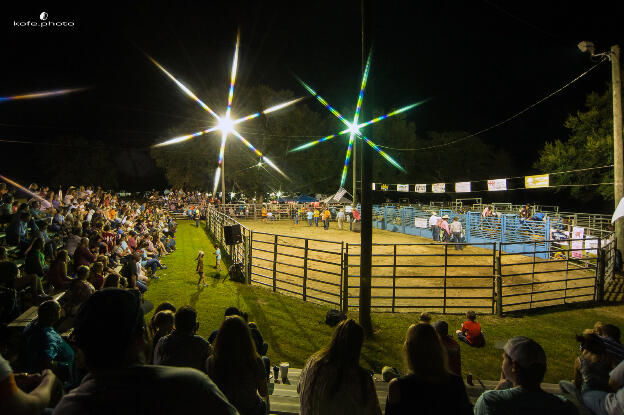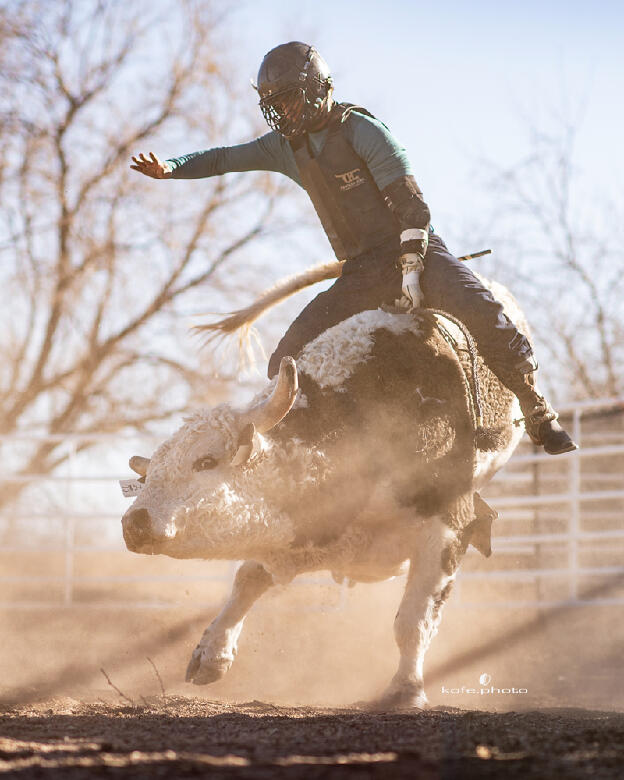Where to shoot rodeo.

“I am new to rodeo photography. Where should I start?” This is a question we all faced.
I will try to help you avoid those mistakes and difficulties that I had. And believe me, I have encountered that a lot. Everything from not being allowed to bring my camera into the venue to being kicked off the rodeo grounds.
By the way, since then, I NEVER go to any rodeos where I am not officially invited by the event holder. Why? Because first of all, I would be wasting time and gas and in the end I wouldn’t even get any photos. Second, it is simply humiliating to be asked to go away, third, it is rude to the official event photographers, and lastly, you are devaluating yourself and breaking the whole business structure.
I will try to explain it this way: No one is expecting dozens of the best wedding photographers or videographers to come to their wedding without booking just because the date and place of the wedding was announced. No, right? Everyone books them in advance. The same should work for a rodeo. Guests can be with cameras but professionals should do their work professionally.
So you should be invited to the event or at least be approved.
Let’s move on to the tips!
First step.
- Rough stock. (Bulls and broncs)
If you are totally new, I would recommend you to find the nearest practice pen for rough stock events. You can find a proper FB group and ask them if you are good to come and practice.
- Time events. (Barrel racing, Steer wrestling, Team roping, Tie-down roping, Poles, etc.)

From my point of view, the best way is to find a photographer who is shooting those events and ask this person to become his or her assistant (second camera shooter).
This is where you can find good contacts for the future and get really nice experience! Believe me, there is nothing better than practice pens! This is where you can relax and enjoy the whole process!
Second step.
Study all rodeo rules and details. Get as deep as you can. Ask people around you, pay attention to everything like difference between the spurs, ropes, saddles, attire; what is good and what is bad, ethics, and what moments you should always avoid. Don’t forget about safety. Safety is not only about your own safe behavior but also something that won’t cause a dangerous situation at the arena. Stay out of the way, don’t scare the animal athletes, don’t block exits, always keep the situation under control, expect the most unexpected, and etc.
Third step.
I can say that there are three main arena types for rodeos. For big events, there are large portrait orientation arenas (bucking chutes are along the short side of the arena) or landscape orientation arenas (chutes are along the wide side of the arena). For bucking bulls only,the arena can be very small (3 or 4 times less than the average rodeo arena).

To get the best photos, you need to take into account several important details such as:
The rodeo event you are shooting (that means you need to know the order of events to find the proper spot for each of them). I guess you would be expecting me to go into further details on this topic, but for now I will only add that you need to create an image with a nice volume, not a flat one. To complete this task, you need to remember that the distance between your lens and the object should be less than between the object and it’s background.

You need to take into consideration the light (natural or arena artificial) and the way it is going to change during the event.
You need to know your manual camera settings. Manual white balance, manual shutter speed, manual ISO, and manual aperture. I would recommend to turn off automatic noise reduction and lens stub. Also, don’t use monopods or tripods. It is not a still life photo but active sports photography. Move and be flexible. If you can’t hold your camera go and exercise or find yourself an easier job. For night time photography, you need to enable Flicker reduction to make all your pictures more or less the same color. All of these will help you avoid getting green, blue or purple blurry images.
You should not necessarily be at the arena to get good images. Especially, if you are not experienced enough. It is dangerous for you and for the contestants. “If you’re gonna be stupid, you gotta be tough.” Bull fighters and pickup men should be 100% concentrated on contestants safety and not trying to save a photographer.
Don’t stop shooting right after the ride. Bullfighters, pick up men, barrel men, announcers, and judges are also a part of the rodeo.
There is no such rule that demands you must shoot with a wide angle from ground level. It is just one of the multiple options you can use to make your images look different. Try everything and you will find your own way to be unique.
To sum up all of the above, volume and light are the key things that you need to remember when you arrive at the arena.
Fourth step.
Your next step is getting big. You now have knowledge, experience and contacts. Your name speaks for yourself. It is time to get into the big rodeos. With a nice portfolio and the recommendations of two experienced PRCA photographers you can apply to be a PRCA photographer. (Not my way, but can be your way). You can also search for rodeo groups to become an official photographer. Just remember, that it should be done in advance through a rodeo committee, venue or an event holder.
Here you go!
Don’t thank me.Next time we can go deep into details.